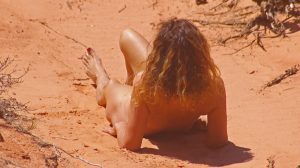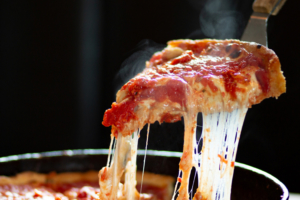With a floppy hat on her head and sunblock in hand, Viv Hynes prepares to play a round at the TPC Scottsdale golf club.
It is above 100 degrees outside.
“It’s mostly the prices,” the Scottsdale resident said of the Valley’s summer golf deals.
She’s not alone. With consistently nice weather and more than 300 courses — including ones that play host to PGA, LPGA and Champions Tour events — Arizona is a popular place for golfers in the winter.
And the summer, too, for a hardcore subset who want to play some of the country’s top courses at a highly discounted rate, even as temperatures hit triple digits.
“Golf in Arizona in the winter can be very expensive but if you’re willing to put up with the heat, you can get a good price, play quickly and have a good time,” Hynes said.
The TPC Scottsdale, for example, hosts the most heavily attended tournament on the PGA Tour and was ranked one as of the top courses in Arizona by PGA.com. During non-summer months, rates can hit $300-plus for the well-manicured course.
During the summer? Try one-third of that.
“It’s more accessible to more people where you might not be able to, or want to, pay $339.00 to play in the month of March,” said Doug Hodge, the TPC Scottsdale’s assistant general manager. “Playing for $127 or $99 during the summer months is a reality. … Golf courses are still in really good condition, service level is still the same, so we try to drive demand with a little bit lower price to get people out when it’s hot.”
Starting in October, prices rise until December, when maintenance procedures are finished and the weather starts to cool down. From January through March, prices are still high, and golfers can find the best temperatures along with the highest prices as tourism is at its busiest.
Typical prices at Scottsdale’s highly regarded Troon North, for example, are $259 in the winter and $69 in the summer. At the popular Boulders Golf Club in Carefree, common prices are $250 for the winter and $75 for the summer.
Those who opt to play are reminded to proceed with caution. Arizona temperatures reached 119 degrees this summer.
It could be worse. The Furnace Creek Golf Course in Death Valley, Calif., sits a quarter mile from the highest temperature ever recorded in the Western Hemisphere: 134 degree in 1913.
Yet the course remains open in the summer and even has a tournament during that time called the Heatstroke Open.
“That’s pretty much the goal out here,” Las Vegas resident Matt Muscari told Sports Illustrated. “Just make it through without passing out.”
When golfers check in at Valley courses in the summer, they are often reminded of the importance of staying hydrated. Most courses have multiple water stations throughout. With temperatures reaching triple digits, the courses have had to make accommodations.
“Some bring out these towels that are dipped in ice and usually some kind of flavoring. And then it drips down your neck and you scream like a little girl. … That’s nice,” Hynes said.
Every staff member at the TPC Scottsdale and Arizona National Golf Club in Tucson are trained in First Aid and CPR in case of an emergency. While this is good news for the golfers, it is also important that they know how to stay hydrated and are aware of signs that indicate heat exhaustion or dehydration.
Valley resident Robert Schlack plays often during the summer. He has a list of ideas, from experience, to stay cool in hot temperatures, including:
- Wear a hat with a large brim to shade head and ears and to avoid heat and skin cancer. (Some hats can be cooled with water.)
- Dress in light fabric materials such as cotton that are sun reflective in color.
- Soak a towel to wear around the neck and to pat head, hair, etc.
- If there is a beverage cart on the course, ask the workers to replenish beverage cups and coolers.
“I bring a big glass of ice water,” Hynes said. “I drink a lot of water throughout the day. I wear a nice floppy hat that has shade.”
The Texas Heart Institute recommends drinking approximately five ounces of cool water for every 10 minutes of play and to stay away from juices and sodas.
Starting early in the morning makes sense, too. Temperatures reach their peak in the mid- to late afternoon
Another local golfer, Fritz Klink, said he survives by wearing “lighter clothing. And I bring extra waters and an apple.”
Experts say stop playing if dizziness, blushing skin tone or headaches occur.
“Your buddies should, and will, understand,” Schlack said. “If you notice any of these signs with your playing partner, make him/her aware and discuss a good solution to help them overcome the problem.
“Have an emergency cell phone handy and a call number in case of a medical emergency. The course should be able to recommend the best contact for this.”
Although some play golf in extreme heat conditions for the price, others play simply for the love of the game.
“It’s TPC Scottsdale, Waste Management Phoenix Open. It’s prestigious I guess you could say… It’s always been a dream to play at some of these courses,” said Presley Wade, a visitor from Mississippi.
“You play in all conditions, no matter what. Just play it as it lies.”
Story by Faith Phares, Cronkite News




